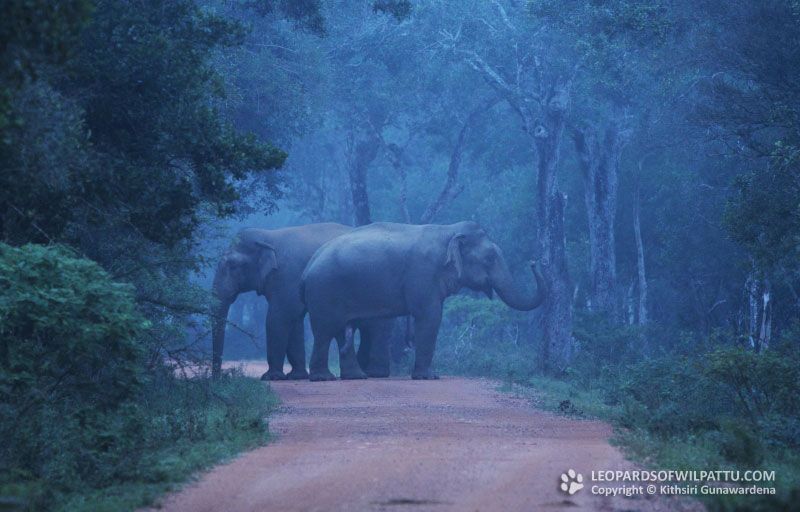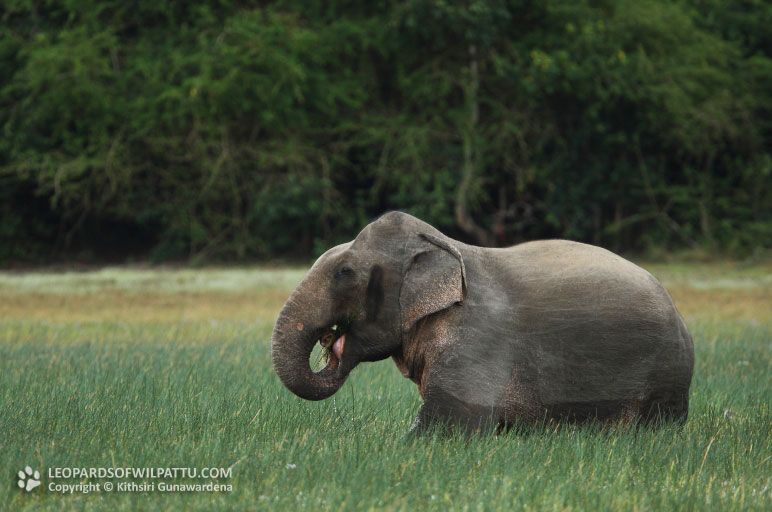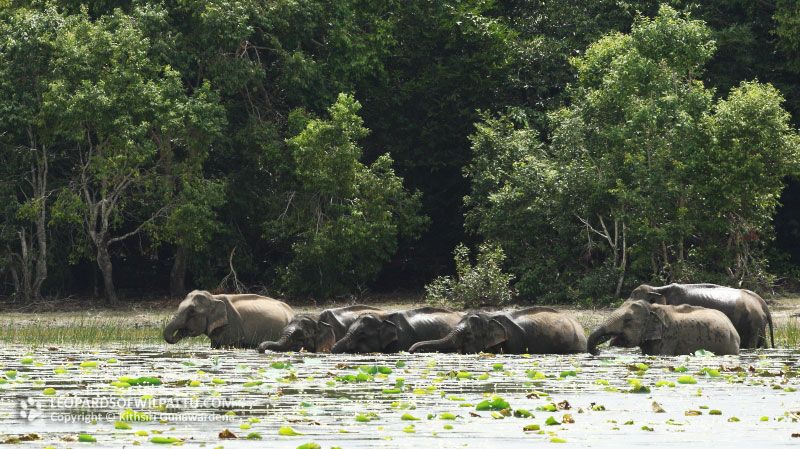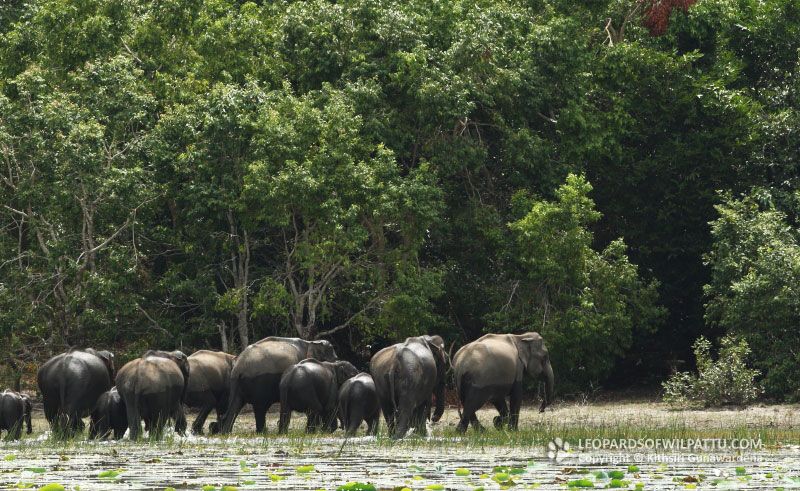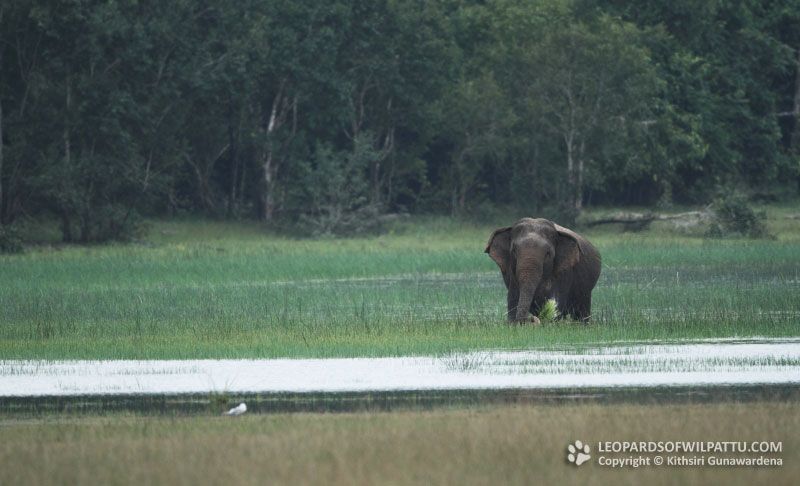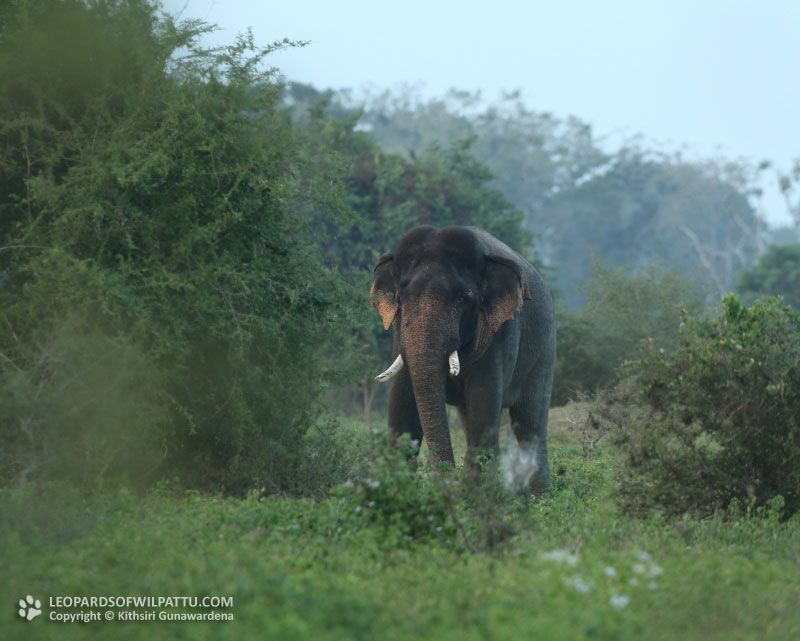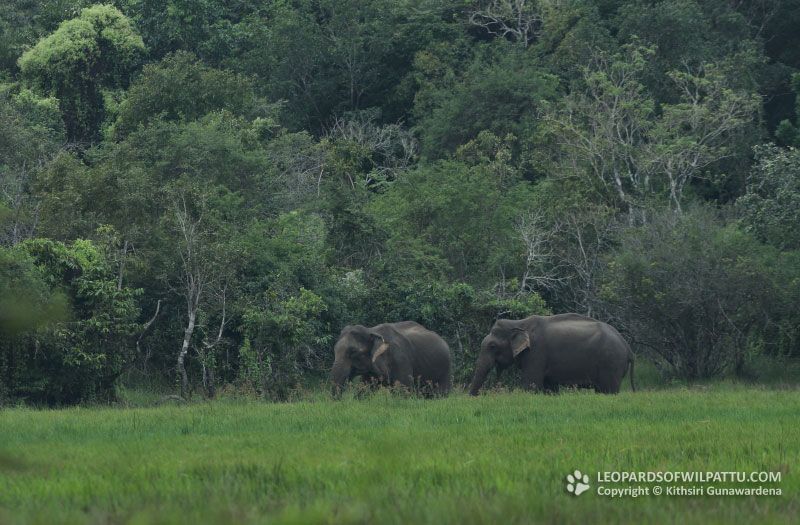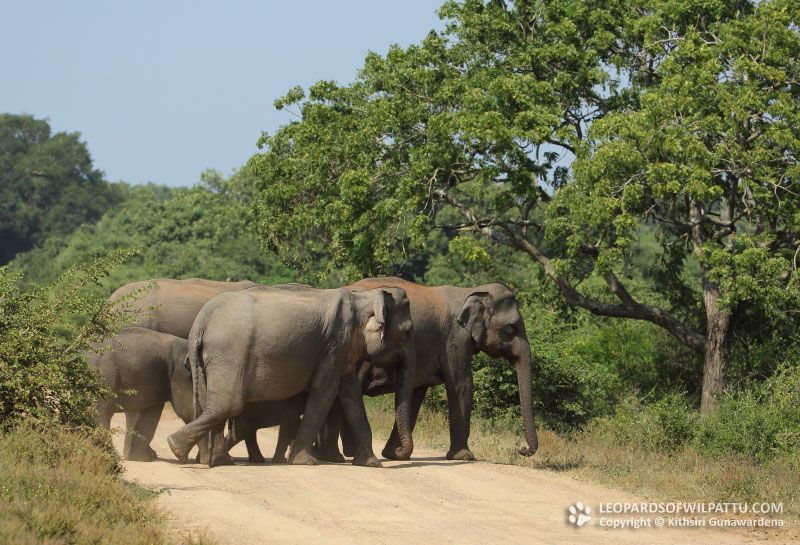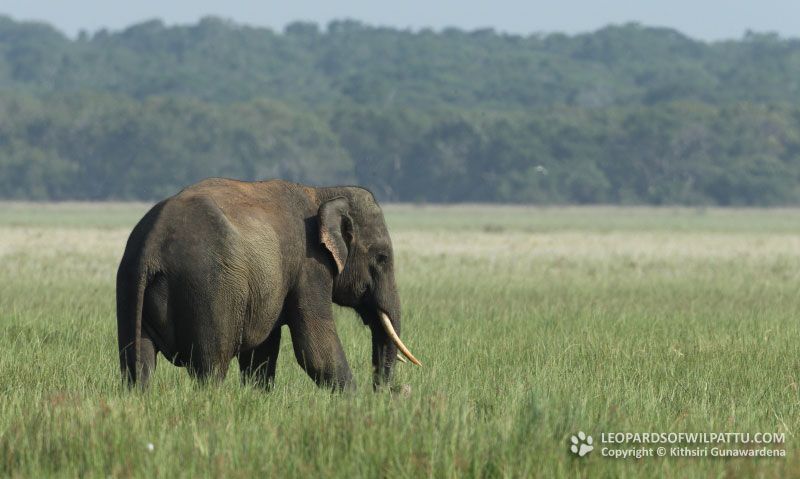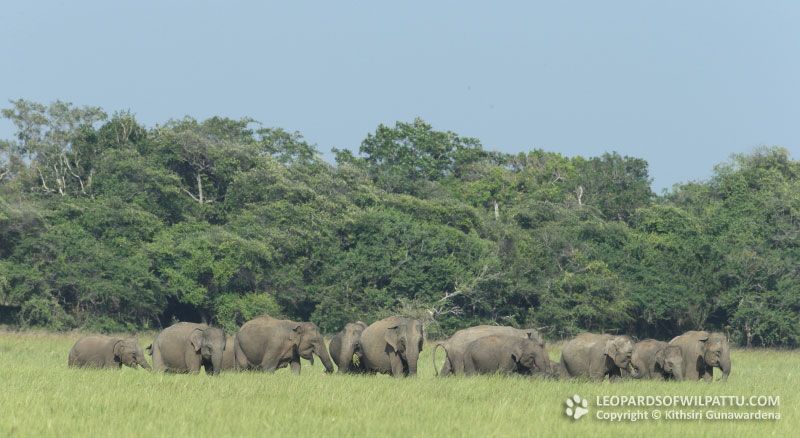
Mammals ‹‹ Go Back
Three subspecies of the Asian Elephant are recognized. Elephas maximus maximus is endemic to Sri Lanka; Elephas maximus indicus is found in India, Nepal, Bhutan, Bangladesh, South China, Myanmar, Laos, Cambodia, Vietnam, Thailand and Malaysia whereas Elephas maximus sumatranus is found only in Indonesia. The conservation status of this species is regarded as endangered (National Red List 2012).
This is a species strictly protected under the Fauna and Flora Protection Ordinance as amended by Act No. 22 of 2009.
When they are not harassed, elephants are gentle animals and are quite relaxed. It is an absolute joy to watch baby elephants at play as well as to observe a herd drinking, bathing and frolicking at a water body. However during musth, where the hormonal activity of a bull elephant will drive it to seek a mate, or where newborn young are in a herd, elephants can be extremely aggressive. In such instances it is prudent to observe these animals from a safe distance as they are quite capable of causing extensive damage to life as well as your vehicle. While on foot, I was once charged by a lone bull elephant at Handapanagala close to Wellawaya on a Saturday evening. Even though I had a narrow escape, a young man who accompanied me was crushed to death by the charging elephant. We were having a conversation while walking along a footpath through the forest without being quiet and being observant for any signs of elephants. The elephant had detected us earlier and launched its attack from behind a large bush when we were about 20 meters away from it where our chances of outrunning the speeding elephant were almost non-existent. Chatting in elephant country’ while on foot is a grave mistake, which can result in dire consequences.
In the wet zone while conducting a study at the peak wilderness I have seen fleeting glances of elephants and signs of them at an altitude of 950meters. In the North I have seen elephant droppings in the forests in Veruvil just below Poonaryn and seen a small herd at Arippu. Even though the human-elephant conflict results in the death of about 250 elephants, these magnificent animals still roam most of the large dry zone lowland forests and the adjacent foothills.
In Wilpattu, lone bull elephants can be observed at the commonly visited villus in Block 1 during most of the year. Family groups are mostly observed during the drier months between July-September. Gatherings of 50-60 elephants sometimes visit the Hunuwilagama Tank at the park entrance during this period.
During the rest of the months they are mostly found in the western side of the park in Block 5. Pomparrippu and Maila Villu are known to be localities where elephants can be seen throughout the year. Maha Wewa, located on the eastern side in Block 3 is also a location where small herds can be seen in the evenings.
Large tuskers have also been observed during the dry months of the year in Block 1. On a few occasions I have observed elephants on the main road between Puttalam to Saliya Wewa. On the 8th of June 2013 around 7.30pm while on my way to Wilpattu with Mr. Nanda Senanayake, we observed a tusker feeding by the side of the road at Thabbowa.
However Wilpattu is not a park where one is able to observe elephants regularly unlike Udawalawa, Yala, Minneriya or Kaudulla National Parks.

